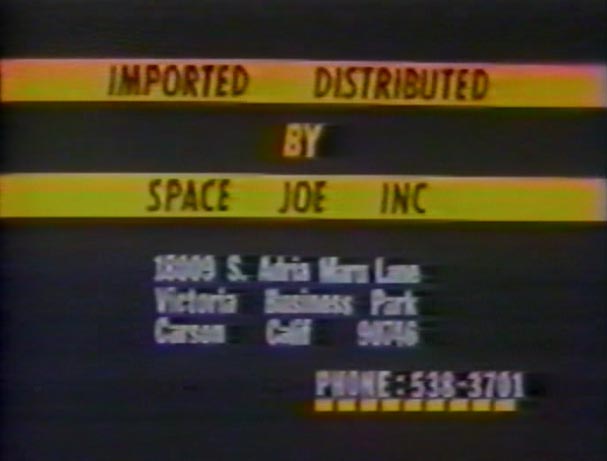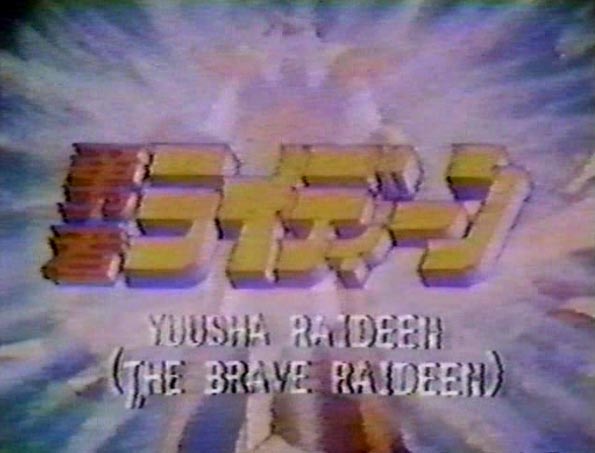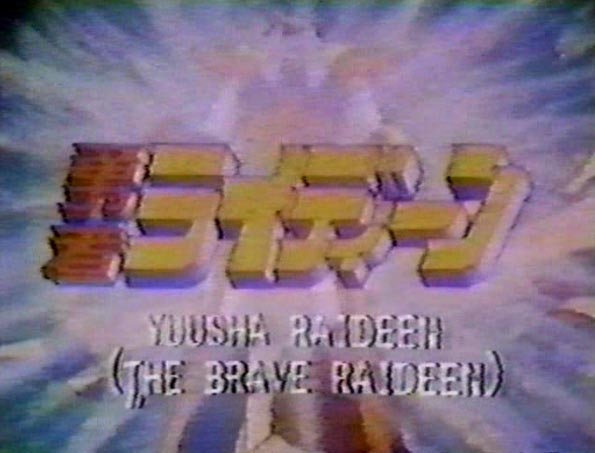The FCC started licensing UHF TV stations lend a hand within the early
50s, it wasn’t until 1965 that every and every recent televisions were required to derive UHF
signals, and it changed into 1975 sooner than Ted Turner turned his local
channel proper into a satellite “Superstation” to forge a media empire. But in UHF’s
heyday each and every market had two or three or four struggling local stations
competing for eyeballs with ancient reruns, low-price movies, peculiar local programming,
cartoons, and exhibits geared in direction of the ethnic minorities underserved by local media;
an anything else-goes free for all where creatives might possibly possibly well experiment (survey: MST3K) and
where a accelerate across the dial might possibly possibly well bring you Jesus, Hercules, the Beaver, El
Santo, Gilligan, or within the case of a couple of markets, translated and subtitled
Eastern TV cartoons.
 Unsuspecting American homes
Unsuspecting American homesbought uncut jolts of big robotic movement, dwelling piracy, heartrending girly
melodrama, soccer group UFO psychics, and combination-supercar races, airing in
Eastern cultural blocks next to files exhibits, sumo scores, flower arranging
how-tos and commercial reviews. Cities with big
Eastern populations indulge in NYC,
repair straight without any Jim Terry or Sandy Frank cutting the dosage. Traditional
anime sequence indulge in Raideen, Getter Robo G, Candy Candy, UFO Dai Apolon, Gattiger
The Combo-Automobile, Cyborg 009 and Home Pirate Captain Harlock all made their
Western debuts by strategy of these Eastern-language UHF transmissions.
These declares would jumpstart
American anime fandom within the darkish interregnum between Mosey Racer and Conflict Of The
Planets, and might possibly possibly well possibly be videotaped off-air on prone wired-distant, high-loading
VCRs and dispensed for the length of the country in prerequisites of monstrous obscurity.
Because the 80s improved, exhibits indulge in Dr. Mosey and
Fist of the North Superstar would confuse cable TV-gazing Individuals until Fuji-TV
realized what changed into occurring and pulled the shuffle.
KIKU-TV (13 on your dial) in
led the fee within the early 70s with programming geared in direction of
big Eastern-speaking inhabitants, hungry for terebi from house. One specific KIKU success changed into Toei’s
are living-movement Kikaida, sparking Hawaiian indulge in of the persona that continues to
on the 2nd. KIKU would protect the Toei tokusatsu parade
marching with exhibits indulge in Kamen Rider V3, Rainbowman, Ganbare!! Robocon, Goranger and Conflict Fever J. KIKU would allotment out their
Eastern programming within the early Eighties and one other express would sooner or later
raise over the name signal, nonetheless of their 70s heyday they equipped Eastern
programming for stations across The United States, each and every subtitled and unsubbed, including,
along with their robots and spaceships, some seemingly cultural significance
with titles indulge in ghost comedy Obake Q-Taro, Manga Folktales Of Japan and the Zen Buddhist monk sitcom Ikkyu-San.
In 1976 KIKU teamed up with the Marukai Trading Co. to bring
the English-subtitled adventures of Courageous Raideen to markets in
and
Osaka-essentially based fully export company that will later inaugurate American tag-membership shops and
the “98cent Plus” chain, subsidized Raideen to advertise the Raideen import toys
they factual took dwelling to be distributing. Became as soon as this a case of
making an terminate bustle spherical Mattel, who’s Shogun Warriors toys were factual initiating
to be sold in
without the marketing and marketing just appropriate thing about TV sketch tie-ins? Easiest Prince Sharkin is aware of.
One part we attain know: the Fresh York/Fresh Jersey express WNJU-47’s broadcast of
Raideen in March of ’76 might possibly possibly well possibly be the main ever American broadcast of a
big robotic sketch.
 In this
In thisslack 70s-early 80s interval, Eastern animation would air on a fluctuate of
stations.
Soul Bellow, and alarm host Svengoolie, would conceal conceal untranslated movies indulge in
Sanrio’s Ringing Bell in between ads for Kokuho Rose Tag Rice. The
“Disc-O-Teen,” broadcast a plump equipment of subbed anime hits including Cyborg 009, Galaxy Train, Raideen, and Harlock, and would later impact Hispanic
broadcaster Telemundo. Sunday
nights in
Goranger without. The SF Bay Region would derive
anime by strategy of two stations, KTSF-26’s “Tokyo TV“ block and KEMO-20’s Sunday night
“Fuji TV” equipment, confusing generations to realize by sharing names with Eastern
broadcasters TV Tokyo and Fuji TV (now FCI), which additionally additional clouded the
teach by offering Eastern programming to American audiences by strategy of the Nippon
Golden Community cable TV express.
might possibly possibly well query, were these exhibits subtitled in English to originate up with? To let third and fourth generation Eastern
experience Getter Robo G along with Grandpa and Gramma-san? To lend a hand promote Eastern
language facility by strategy of pop cultural system?
As a nod to the massive audiences of Anglos inadvertently uncovered to the
raw energy of “Japanimation”, because it began to be known as on the time? Or did some marketing and marketing genius at Marukai
realize they’ll promote more Raideen toys to an target market that knew who Raideen
changed into and why Raideen changed into superior?
 |
| Home Joe Incorporated: For All Your Home Joe Needs |
English localization changed into rudimentary at handiest, reducing dialog to the bare
minimal and presenting the subtitles in a crudely persona-generated all-caps
font. Accurate these were for sure no longer. On the opposite hand, for followers enthusiastic to experience
uncut Eastern animation in its long-established language, these subtitled exhibits were
an intoxicating glimpse into an world in most cases denied viewers on this aspect of the
Pacific. For some fan subtitling groups, KIKU’s subs would provide a sinister
for more comprehensive variations (for occasion, CPF’s Captain Harlock fansubs). Copies of these exhibits were
uncommon. This wasn’t merely taping Robotech off-air or spending a couple of hundred
bucks on import VHS; you had to know any individual who knew any individual who took dwelling to
be working a video recorder in a genuinely specific dwelling at a genuinely specific
time, and that anyone had to owe you a prefer, Godfather style.
intent upon distribution by fan networks, these subtitles pushed
client-grade video-reproduction abilities to their limits. Already weakened
by strategy of whatever stone-age video processing plot KIKU and Fuji TV were the exercise of to
generate their subtitles, these episodes were recorded off-air by the prone
two-headed VCRs of the slack 70s and early 80s.
By the time they were handed from fan to fan by strategy of daisy-chained,
overheated VHS decks, the barely adequate signals were nearly unwatchable,
forcing desperate viewers to hope for darkish backgrounds all over critical trouble
aspects.
 |
| bending the envelope of illegibility by strategy of a pair of VHS iterations |
 |
| Fuji-TV HQ, Odaiba |
would terminate their anime experiment within the early 80s nonetheless the Eastern-language
cable express Nippon Golden Community would gather the slack a couple of years later.
Since 1981, NGN has introduced Eastern TV, including files, J-drama, karaoke, and
children’s programming, to markets in Hawaii, mainland United States, and Guam,
and curiously adequate is now partially owned by Eastern telecom broad J-COM. Within the slack 80s and early 90s NGN broadcast
subtitled episodes of Galaxy Train 999, Dr. Mosey, Dragonball, and Fist of
the North Superstar, equipped to them by
cavernous sci-fi Fuji-TV headquarters constructing on Odaiba in Tokyo – two blocks
from where the existence-size Gundam now stands guard – anyone there seen that
fashioned Eastern programs were airing on American tv, possibly
forestalling any future licensing of said fashioned Eastern programs to the
wider American TV market. This ended in a
charming press free up from Fuji-TV; turns out some “leisure programs…
were in short dispensed to the
subtitles”. The tender and intensely
Eastern wording of this piece offers the facts without assigning any staunch
blame to the apparently unintended translation and subtitling of hundreds of TV
episodes. Sorry, it changed into inadvertent, won’t occur all over again.
underground samizdat community of fan translators and subtitleists delivering
anime in readable English, nonetheless additionally a sizeable and rising North American anime
localizing exchange releasing Eastern animation to the home video market. The
day of the barely legible, barely translated UHF broadcast had handed. Easiest
mud and mounds of shedding VHS remained in its hurry, a faint air of thriller
and bewilderment drifting within the snow between the channels, taking us lend a hand to
the time when UHF tv changed into a frontier where anything else changed into seemingly, even
uncut Eastern animation with fuzzy, barely legible subtitles.
to August Ragone, Evan Chung, Patrick Drazen, Shaun Camp, Chet Brier, and Fred Patten





